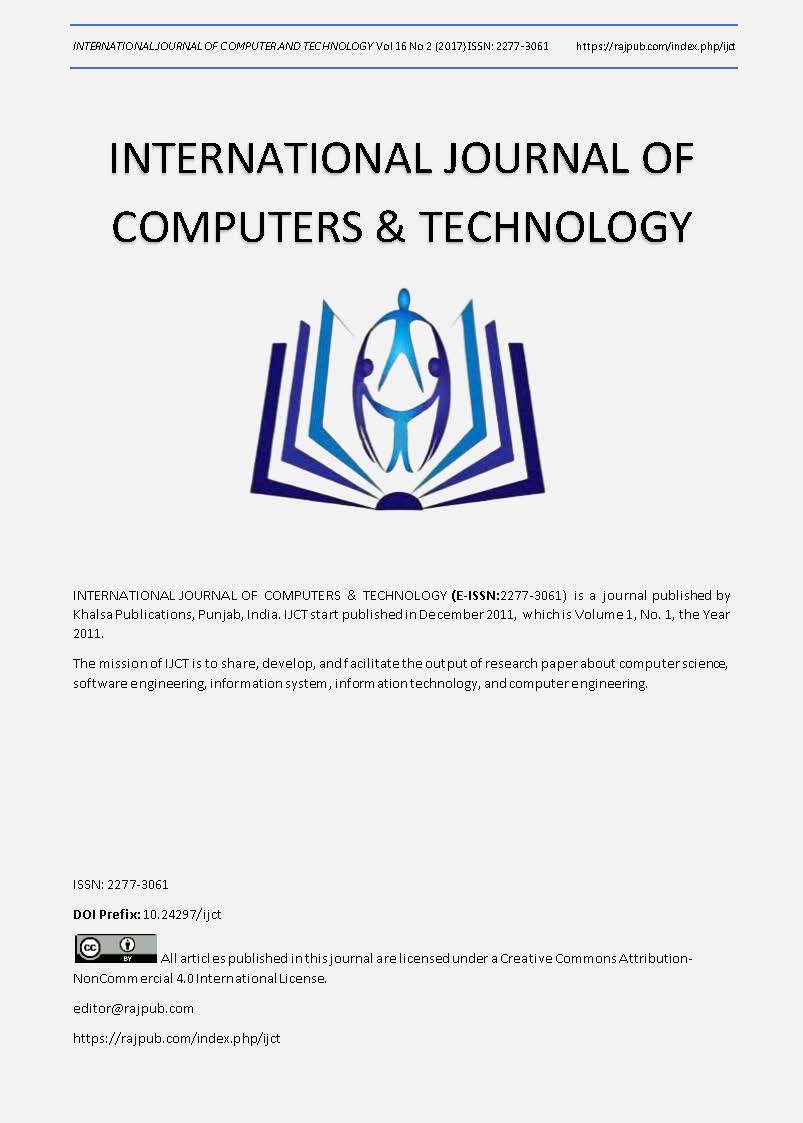A REVIEW ON A HYBRID APPROACH USING MOBILE SINK AND FUZZY LOGIC FOR REGION BASED CLUSTERING IN WSN
DOI:
https://doi.org/10.24297/ijct.v16i2.5999Keywords:
Wireless, Sensor Networks, Protocol, Cluster Head, WSN, Fuzzy LogicAbstract
A Wireless Sensor Network or WSN is supposed to be made up of a large number of sensors and at least one base station. The sensors are autonomous small devices with several constraints like the battery power, computation capacity, communication range and memory. They also are supplied with transceivers to gather information from its environment and pass it on up to a certain base station, where the measured parameters can be stored and available for the end user. In most cases, the sensors forming these networks are deployed randomly and left unattended to and are expected to perform their mission properly and efficiently. As a result of this random deployment, the WSN has usually varying degrees of node density along its area. Sensor networks are also energy constrained since the individual sensors, which the network is formed with, are extremely energy-constrained as well. Wireless sensor networks have become increasingly popular due to their wide range of application. Clustering sensor nodes organizing them hierarchically have proven to be an effective method to provide better data aggregation and scalability for the sensor network while conserving limited energy. Minimizing the energy consumption of a wireless sensor network application is crucial for effective realization of the intended application in terms of cost, lifetime, and functionality. However, the minimizing task is hardly possible as no overall energy cost function is available for optimization.
Downloads
References
[2] S. Bera, S. Misra, Sanku Kumar Roy and Mohammad S. Obaidat, "Soft-WSN: Software-Defined WSN Management System for IoT Applications," IEEE, pp. 1-8, 2016.
[3] N. A. M. Alduais, J. Abdullah, J. Abdullah, A. Jamil and L. Audah, "An Efficient Data Collection and Dissemination for IOT based WSN," IEEE, 2016.
[4] O. Singh, V. Rishiwal and M. Yadav, "Energy Trends of Routing Protocols for H-WSN," IEEE, 2016.
[5] R. Kumari and. P. Nand, "Performance Comparison of various Routing Protocols in WSN and WBAN," IEEE, pp. 427-431, 2016.
[6] Hector Kaschel and ohanna Ortega, "Energy efficiency in routing protocols applied to WSN," IEEE, 2016.
[7] Asdianur Hadi and Ida Wahidah, "Delay Estimation using Compressive Sensing on WSN IEEE 802.15.4," IEEE, pp. 192-197, 2016.
[8] Mohd Zaki Shahabuddin, Halabi Hasbullah and Izzatdin A Aziz, "eliminary Framework of Topology Control Algorithm Achieve Node’s Energy Efficiency," IEEE, pp. 259-263, 2016.
[9] Abhay kumar L. Gupta and Narendra Shekokar, "A Novel Approach to Improve Network Lifetime in WSN by Energy Efficient Packet Optimization," IEEE, 2016.
[10] B. Bengherbia, S. Chadli, M. Ould Zmirli and A. Toubal, "A MicroBlaze Based WSN Sink Node Using XBee Transceiver," IEEE, pp. 831-834, 2016.
[11] Gagandeep Kaur, Deepali and Rekha Kalra, "Improvement and Analys Security of WSN from Passive Attack," IEEE, pp. 4520-425, 2016.
[12] M. Wu, H. Liu and Q. Min, "Lifetime Enhancement by Cluster Head Evolutionary Energy Efficient Routing Model for WSN," IEEE, pp. 545-548, 2016.
[13] Roman Lara-Cueva, Rodolfo Gordillo, Liliana Valencia and Diego S. Ben, "Determining the Main CSMA Parameters for Adequate Performance of WSN for Real-time Volcano Monitoring System Applications," IEEE, pp. 1-9, 2016.
[14] Sanaa. S. Abd El dayem and M. R. M. Rizk, "An Efficient Authentication Protocol and Key Establishment in Dynamic WSN," IEEE, pp. 178-182, 2016.









